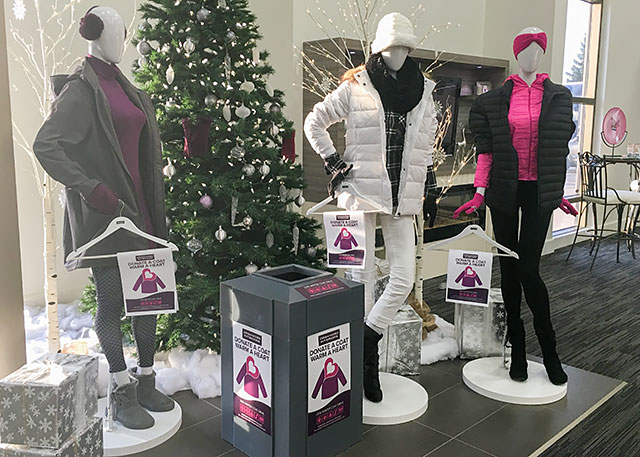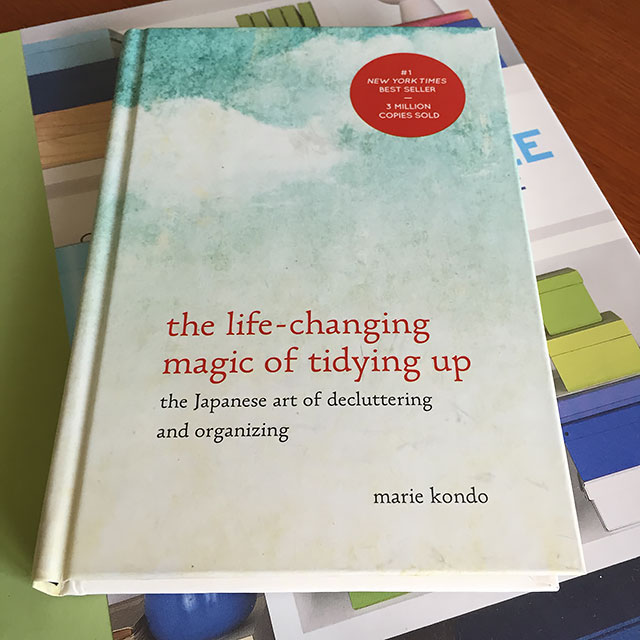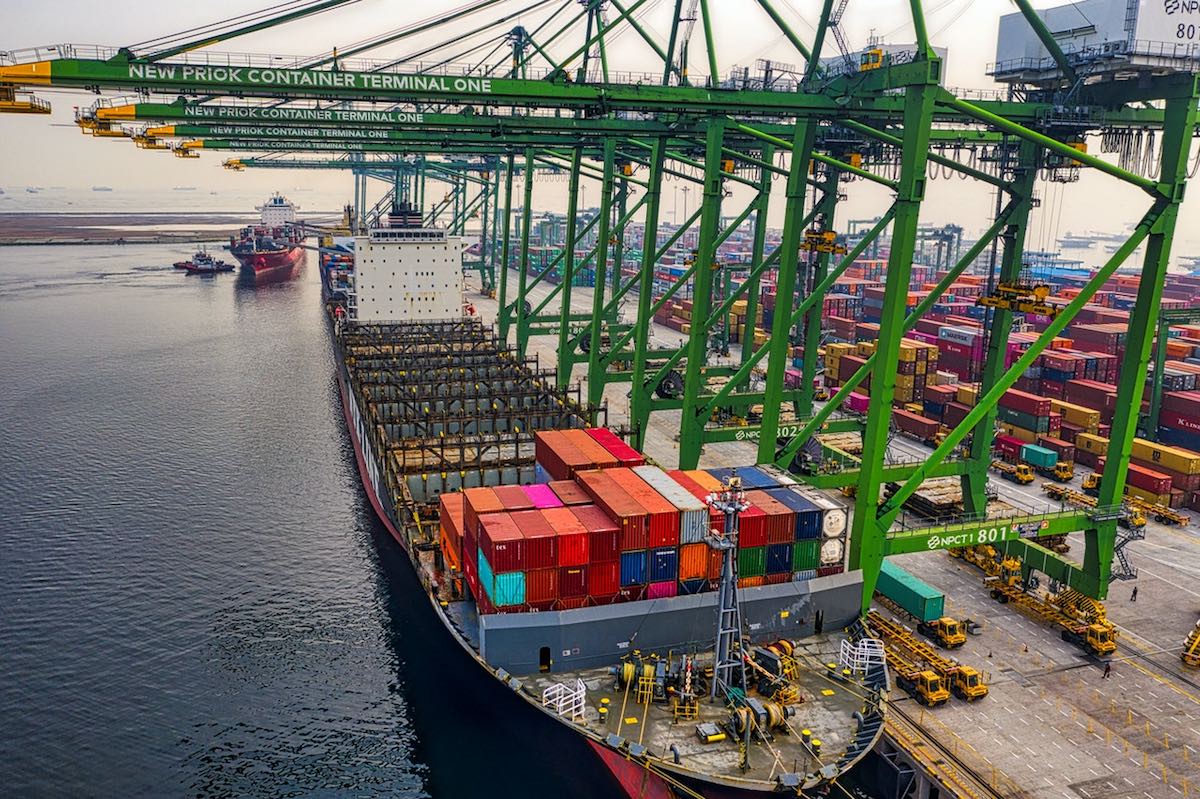
Photo by Tom Fisk from Pexels
You’ve probably noticed stories about supply chain challenges appearing regularly anywhere you get your news nowadays. That’s because the pandemic has tested the stability and functionality of our supply chains like never before.
What is a supply chain? In short, a supply chain is the system that allows products to get from where they’re made to where they’re sold.
You’ve surely heard the saying that a chain is only as strong as its weakest link. Well, that proverb has proven true over the past couple of years, on an epic scale.
Multiple weaknesses in the system of global supply chains we rely on for almost everything in our lives, along with other factors, have led to massive shortages of many products and manufacturing materials.
Organized Interiors knows you don’t need a reminder of how stressful things are in the world these days. However, we wanted to address the very important and relevant issue of supply chain challenges because they affect everyone, including you – our valued customers.
How does a supply chain work?
The supply chain is one of those things that consumers have never had to pay much attention to…until now, when it starts impacting our shopping habits in a major way.
How important are supply chains? The infamous failure of Target Canada is a perfect example of how essential it is for businesses to have a reliable, resilient inventory procurement system. All of those empty shelves in Target’s stores were largely the result of poor supply chain infrastructure, which was one of the key reasons for the company’s swift demise here.
Supply chains involve a complex network of resources, technologies, individuals, companies, and activities that are dependent on one another. They consist of five main components:
- Planning and purchasing: buyers like retailers determine their supply and demand needs and place orders for products and materials.
- Warehousing and inventory management: enough inventory is stored so orders can be quickly filled. A reliable inventory management system is used to maintain sufficient inventory levels.
- Manufacturing: goods are made to replenish depleted supplier inventories after their orders have been filled.
- Transportation: goods are shipped to the customer.
- Return of goods: products that the seller has an excess quantity of or don’t meet the satisfaction needs of a customer because they’re defective or low-quality are returned to the supplier via a “reverse logistics” system.
Canada relies heavily on overseas countries for our goods and manufacturing materials, which are shipped by sea, air, truck, and train.
When there is one disruption to any branch of a supply chain, it impacts the rest of the system. And there has been no shortage of disruptions and other issues impacting the global supply chains in 2020 and 2021 that are both pandemic and non-pandemic related.
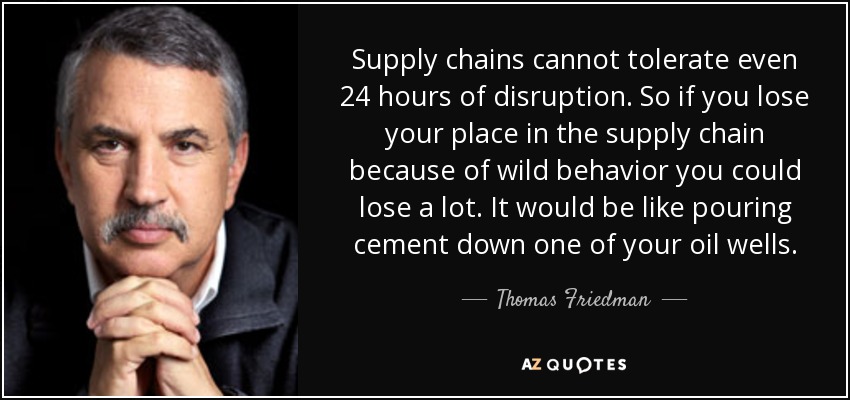
Thomas Friedman is a three-time Pulitzer Prize winner and New York Times columnist who writes about foreign affairs, global trade, and globalization.
9 reasons there are supply chain problems
The pandemic exposed the fragility and shortcomings of our supply chains. Additional unforeseen factors only helped to push the entire system to the breaking point and create one big logistical nightmare.
These are the main issues (in no specific order) that helped create “the perfect storm” of current problems for supply chains:
1. Unpredictable consumer spending
When the pandemic began, panic buying quickly eliminated all of the inventories of retailers and their suppliers for many products. Online shopping purchases skyrocketed when lockdowns were put in place.
As lockdowns lifted, consumers were eager to make up for lost shopping time at brick and mortar stores and spend liberally. This out-of-the-ordinary spending behaviour has made it much more difficult to gauge supply and demand needs.
2. The just-in-time manufacturing philosophy
“Just-in-time” manufacturing is a process used by most businesses, including the biggest companies in the world like Apple, Amazon, Walmart, and McDonald’s.
It relies on companies forecasting demand for their products so they can make “just enough” of them and not have to carry a lot of extra inventory. That philosophy made it harder for supply chains to adapt when the world’s economies contrasted quickly during the early part of the pandemic and then expanded rapidly again in 2021.
3. Labour shortages and efficiency slowdowns
Things aren’t getting manufactured or sold to consumers as quickly as they normally would because workplaces have dealt with lockdowns, COVID-19 outbreaks, quarantines, and burnout by workers. Even when workers can perform their jobs, extra workplace safety measures are also slowing down efficiency.
4. Shipping delays
The shipping industry has been hit especially hard by labour shortages, which contributed to the unprecedented congestion occurring at shipping ports and train yards around the world. So did other factors like economies around the world reopening and the demand for goods increasing.
Shipping companies simply haven’t been able to keep up with that demand, which is a problem considering 85-90% of the world’s goods are transported by sea. The New York Times reports that Georgia’s Port of Savannah, for example, recently had 40,000 more shipping containers on-site than usual (which is twice as much as normal).
5. Shipping container shortages and higher shipping costs
Shipping containers have become scarce as manufacturers are producing more goods than they normally would to fill backorders. Naturally, that has driven up the cost to buy, rent, and lease the containers.
Many retailers have reported that their shipping costs to acquire inventory have tripled during the pandemic and even quadrupled in some cases.
6. Border restrictions and slowdowns
Goods being shipped across borders haven’t been moving as quickly as normal because of border restrictions, mandatory quarantines, transport workers having to wait on coronavirus test results, and general labour shortages.
Governments around the world have also had to implement more regulation and oversight measures to combat an increase in import and export fraud.
7. Inconsistent virus testing and vaccine standards
The lack of a global standard for COVID-19 testing and vaccines has been an ongoing issue. Vaccines that have been approved for use in some countries aren’t approved for use in other countries. Some companies have had mandatory vaccine requirements, while others haven’t. And many countries haven’t had as much access to reliable vaccines as Canada and the U.S. have.
All of these issues are magnified during a pandemic when they apply to workers who make a living by being constantly on the move from one country to another.
8. Shortages and rising costs of raw materials
Manufacturers have been hampered by ongoing shortages of raw materials like metal, glass, polymers (which are used to make plastic), lumber and cardboard, wheat, and coffee, just to name a few things.
China, the world’s manufacturing hub, is experiencing a coal shortage right now. Because coal is China’s main source of electricity, some manufacturing facilities are unable to operate around the clock as they typically would.
9. Non-pandemic factors
Geopolitical turbulence like the U.S.-China trade war and Brexit have contributed to our supply chain problems. So have severe weather events like last winter’s storm in Texas that affected production for the fuel and chemical industries (among many others).
And that container ship that got stuck in the Suez Canal (which handles 12% of the world’s maritime trade) for six days in March didn’t help matters, either.
This video does a great job of explaining the issues supply chains are dealing with:
How supply chain issues are affecting consumers
The three ways all of these supply chain issues are affecting consumers most is:
- products aren’t as available as they normally are
- it’s taking longer to get items shipped to stores
- some products will cost more
At this point, you’ve probably dealt in one way or another with the effects of strained supply chain systems. We won’t soon forget the toilet paper-buying frenzy of early 2020 and shortages early on in the pandemic of products like PPE and other medical equipment, cleaning products, baking ingredients, and dry and canned food.
As we spent most of our time at home, products like home office furniture, gym and exercise equipment, and grills and patio heaters became almost impossible to find (and still are in some cases).
Worldwide shortages of microchips have impacted the production of virtually all types of electronic products. Everything from cars to appliances to electronic devices aren’t as readily available as normal.
Apple just announced that they were being forced to reduce the production of the new iPhone 13 by up to 10 million units. The CBC reports of one case where a customer has been waiting almost a year to get the new fridge she bought on Boxing Day in 2020.
A few more examples of shortages of essential items that are affecting consumers and businesses are aluminum cans, plastic bags, car tires, and building materials like lumber, roofing products, and drywall.
Some products have naturally seen price increases because of more expensive shipping costs. However, increased sales volumes have allowed retailers to absorb the higher costs they’re paying to their suppliers and keep prices on some of their products the same.
When will things return to normal?
As frustrating and difficult as things have been and continue to be with how our supply chains are functioning, normalcy will return. Not as quickly as we all would like, mind you, but it will happen.
They say that “you learn from your mistakes” and “every struggle makes you stronger”. These current challenges will lead to positive changes that will make our supply chains and quality of life better in the long run.
For example, countries like Canada will be better equipped to deal with a public health crisis in the future. And governments and businesses have begun to rethink how our supply chains run and already started to make some improvements. Some of these changes include:
- more “supply chain diversification” (where companies rely less on sourcing their goods from one country)
- an increase in domestic manufacturing
- sourcing products closer to home
- better contingency planning to make supply chains less vulnerable when events like health crises, extreme weather, natural disasters, and political instability occur
As you can imagine, there’s no blueprint for fixing something as complex and massive as our global supply chain system. These supply chain issues will continue well into 2022 and beyond, unfortunately.
For example, companies that make semiconductors (which are the main component in microchips) expect they’ll be able to fill the majority of their backorders by approximately next summer. Many of them have recently invested heavily to boost their manufacturing capabilities.
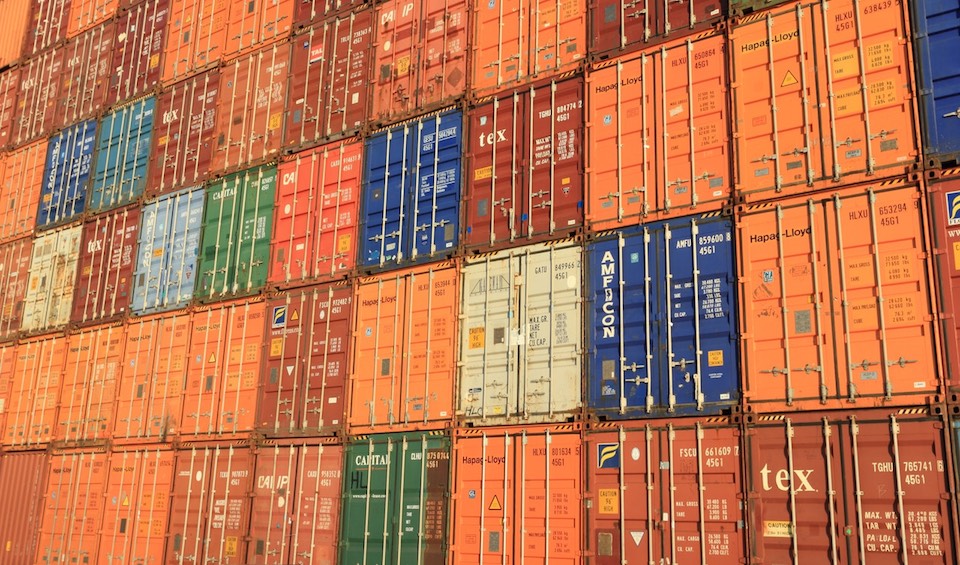
Surging shipping costs, increased prices for shipping containers, and labour shortages are among the many reasons it’s taking longer for freight to move around the world.
How we’re dealing with supply chain challenges
Like most other companies, Organized Interiors continues to adjust to the strains on the supply chain systems we rely on.
While we construct our custom cabinetry in-house at our production shop, Organized Interiors does rely on outside suppliers for materials like melamine board, crown moulding, glass, mirror, and hardware. Another example of a product we get from suppliers is electric fireplaces, which are taking far longer to get than ever before, especially as the cold weather arrives.
Typically with just-in-time manufacturing, materials arrive shortly before a project’s installation date. Our suppliers have been reliable and efficient with deliveries in pre-pandemic times. Recently, however, we’ve seen a surge in shipment delays from them that have been above and beyond anything previously experienced.
Because these issues have had an impact on some of our projects, we have proactively introduced new procedures to adapt to these challenges. This includes:
- on rare occasions, the installation schedule for projects may need to be adjusted and/or the estimated timeframe for some projects may require an extension
- ensuring all production shop team members meet and exceed COVID-19 safety protocols
We remain committed to serving you
During this challenging period, Organized Interiors continues to work to the best of our ability to provide our valued customers with the highest-quality customer service. We thank you for your patience and understanding as we all do our best to navigate through this trying time.
Even with these ongoing global supply chain issues, Organized Interiors remains committed to helping you get the most out of your homes with the best organization and storage solutions available.
To find out more about how we can upgrade any part of your living space, schedule a free design consultation with us.
Please share this post if you found it useful.

